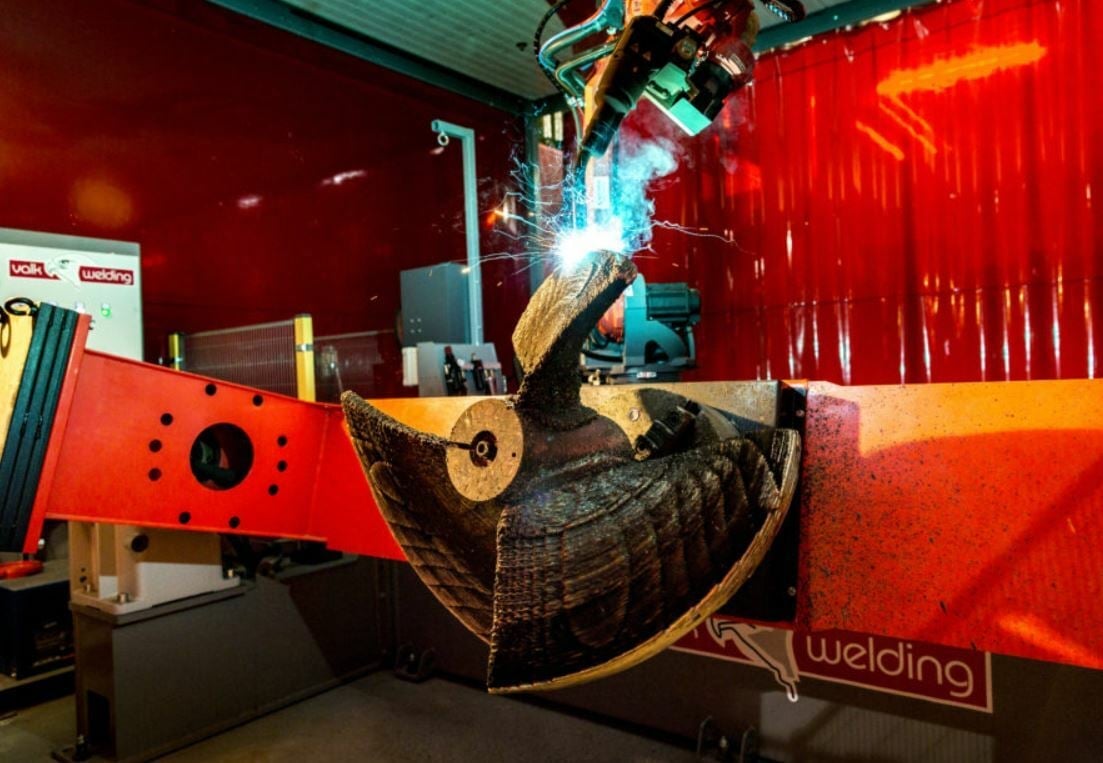As the community- and maker-driven RepRap project has grown, more unique types of fused-deposition modeling (FDM) 3D printers have been invented. These machines, such as the delta, SCARA, polar, and belt printers, have differences in their motion style, coordinate system, and other aspects.
The 3D-Rotoprinter is a fairly new FDM machine that takes a relatively unique approach to 3D printing, using a rotary axis. The machine was invented by 3D printing enthusiast Jonas Duteloff while studying at the Burg Giebichenstein University of Art and Design in Halle, Germany.
Although this printer got some hype on social media, there’s only one build, which was made by the inventor himself. Currently, you can’t buy a Rotoprinter, and because it’s only practical for printing certain types of parts, which we’ll get to later, it doesn’t have as broad an audience as more versatile types of machines (e.g. i3-style machines).
Nevertheless, the Rotoprinter is worth learning about! In this article, we’ll review the project, including how it works and its advantages and drawbacks. We’ll also cover some examples of machines that follow a similar motion system and look into how they’re used. Enjoy!
How Does It Work?
3D printers, in general, are pretty complicated machines, and the 3D-Rotoprinter is on the more complex side of the spectrum. In this section, we’ll go over how the 3D-Rotoprinter is built and how it works.
Basic Motion
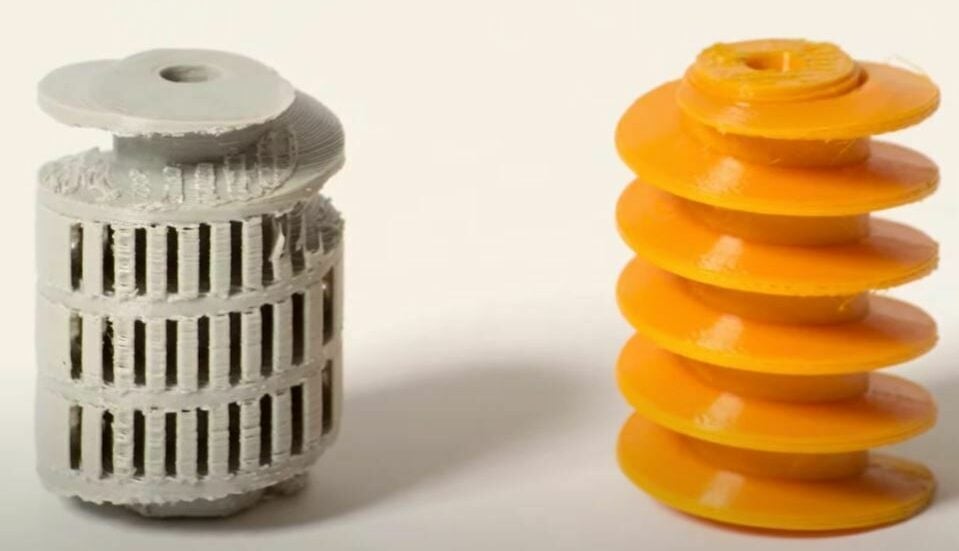
The 3D-Rotoprinter works uniquely compared to most 3D printers but still uses a Cartesian coordinate system (i.e. using X-, Y-, and Z-axes). The movement style of this type of printer is pretty similar to a CNC lathe, which spins a base object against a cutting tool to craft the desired part. It also utilizes a rotational motion but performs additive rather than subtractive manufacturing. Moreover, the Rotoprinter features a standard FDM extrusion system, where the stringed filament is melted and pushed through a nozzle, adding material (usually thermoplastic) to a spinning cylindrical build plate.
Although the motion of the Rotoprinter is unusual, the overall structure (e.g. frame) is pretty typical and nothing especially new. Besides the build plate, this machine looks like many other i3-style printers, like the Ender 3 V2, and uses a Bowden extruder setup with a standard FDM hot end.
The printhead moves along an X-axis gantry (the designer used conduit sliding rails with belts), which can move up and down along the Z-axis. The Y-axis motion defines the build plate’s rotational movement, which is the unique element of the Rotoprinter’s motion style.
Due to its rotational axis, the Rotoprinter can produce better cylindrical prints, like a threaded screw, compared to traditional printers with flat build plates. As seen in the image above, the “stair-stepping” effect commonly seen on traditional prints with curved features is significantly reduced when using the Rotoprinter.
On top of improved visual quality for prints, the Rotoprinter’s motion style also reduces the need for post-processing compared to regular FDM printers. That’s because the Rotoprinter can print specific cylindrical models without the usually required supports. This reduces the time needed to clean up the model, as removing supports and sanding rough overhang edges isn’t required.
Build Surface
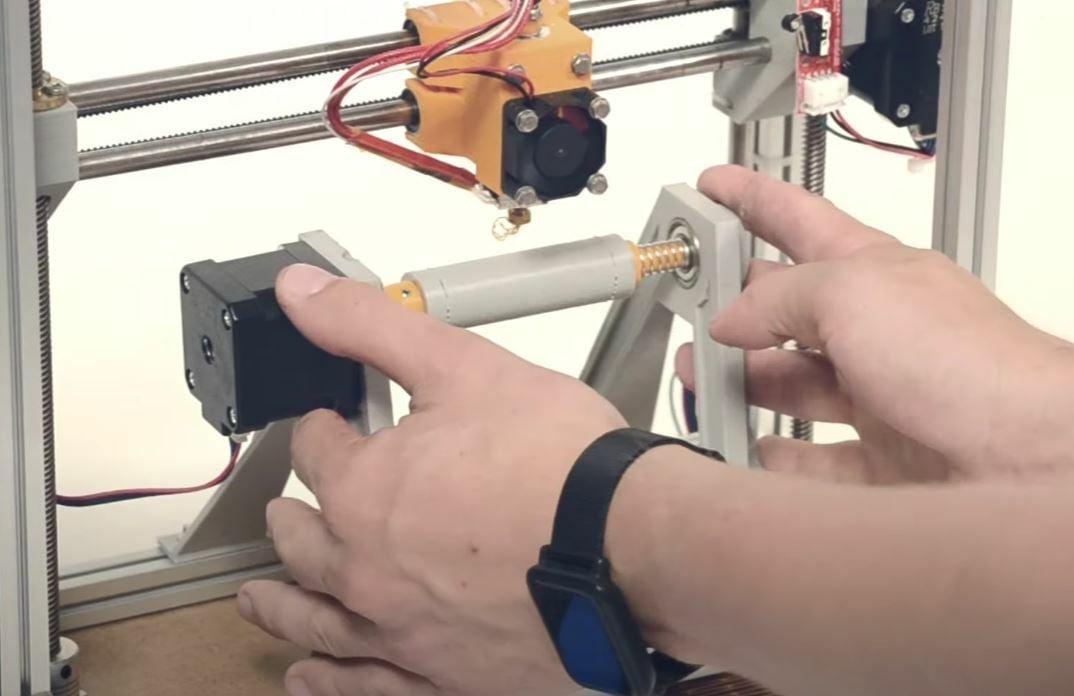
When a print job starts, the printhead moves along the X- and Z-axes around the cylindrical base object (also known as a “blank”), which serves as the build plate for the 3D-Rotoprinter. On this note, the Rotoprinter’s build surface is perhaps its biggest difference from other printers and gives the machine its special, rotational printing style.
The build surface is cylindrical and should be made of the same material that will be printed with the Rotoprinter. This base part is ideally printed on another, standard FDM machine.
Because a new build surface is needed for every print, the Rotoprinter includes a two-sided spring compressed mechanism with two pointed prongs. The two pointed prongs are pushed together by the springs and secure and stabilize the new build surface. However, they can easily be pulled apart when the surface needs to be replaced.
Both prongs can rotate, but one is ideal, connected to a bearing, while the other is connected to the Y-axis stepper motor. The prong connected to the motor is responsible for turning the build surface during printing.
It’s important to note that the printhead, specifically the nozzle, only moves across the build plate along one line segment, similar to a belt printer. This makes bed leveling easy given that the base prints should always be of the same dimensions.
Electronics & More

The electronics on the 3D-Rotoprinter shouldn’t be (or don’t need to be) any different from a regular FDM machine’s. That’s because the motors, endstops, heaters, and thermistors all function the same way, even if they’re rearranged. The machine designer notes that the printer uses an Arduino Mega with a RAMPS 1.4 Shield, a common board for 3D printing purposes.
As for the firmware and slicing software, there aren’t many options. The inventor of the Rotoprinter also stated that the machine uses a modified version of Marlin, but there’s no reference as to where this custom firmware package can be found. The same goes for the slicer software, but with Cura.
It’s worth mentioning that the designer’s site for the Rotoprinter states that he’s looking for a software engineer to develop specialized polar coordinate-based firmware and a slicer for the printer. However, the application is dated May 2020, and currently, neither firmware nor a slicer are available.
Pros & Cons
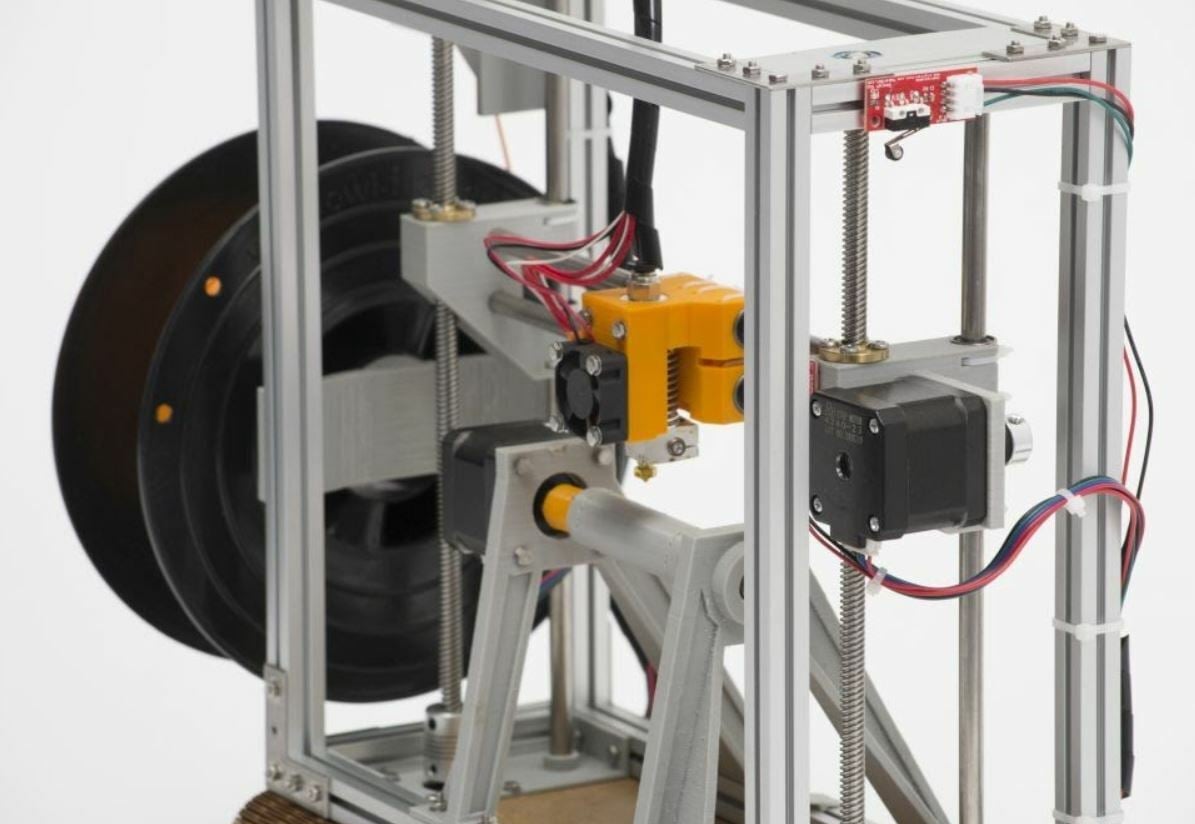
Now that you know how the 3D-Rotoprinter works, below, we’ve created a list of pros and cons for this specific machine and its printing style:
Pros
- Prints features around a cylindrical base very well
- Z-offset or “bed leveling” only needs to be set for a line segment
- Prints relatively quickly
- Uses the same robust frame as an i3-style printer
- Makes swapping build surfaces easy
Cons
- Dependent on the quality of the base part
- Can’t print the base part
- Heavily dependent on first layer adhesion
- Requires build surface to be replaced with every print, including failed prints (e.g. if the nozzle touches the base)
- Can’t print normal objects unless they have a cylindrical core
- Doesn’t offer much information on firmware, slicing, or building
Application & Examples
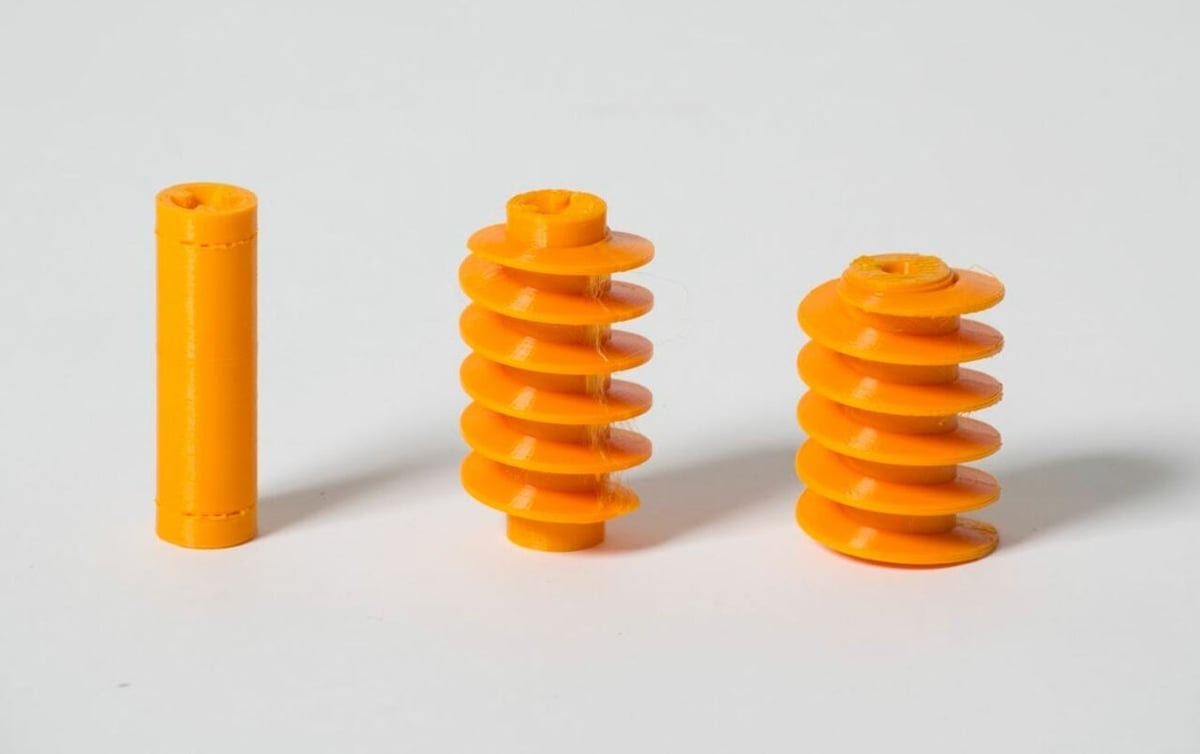
You’ve probably figured out by now that the 3D-Rotoprinter is somewhat complex regarding its motion style when compared to other types of FDM printers. This complexity presents both strengths and weaknesses in different scenarios.
Arguably the most important benefit of this machine is that it’s excellent for printing cylindrical objects. Due to its use of a rotating build surface, it can print curves, helixes, and features along its cylindrical base very well.
For the same reason, though, this means that you can’t use the Rotoprinter to make any ordinary object unless it has a cylindrical core.
Examples
As we’ve mentioned, the 3D-Rotoprinter is one of a kind. However, there are a few similar machines that also use a rotational axis to produce parts.
The first similar machine is the CNC lathe, on which the motion system of the Rotoprinter seems to be based. CNC lathes are computer-controlled subtractive manufacturing machines that rotate a block of material while steadily cutting it to craft the desired part. Lathes, including CNC and manual options, are often used to make large cylindrical components, like baseball bats, pool sticks, and even table legs.
Other commercial production machines exist, too, including industrial 3D printers used to make particular objects. One popular example is the production of boat propellers through Wire Arc Additive Manufacturing (WAAM). These WAAM machines follow a similar motion system to the Rotoprinter but aren’t technically FDM printers due to their extrusion systems.
Lastly, you can find a similar motion system in smaller-scale professional printers, such as the ones made by Diabase. Diabase’s H-Series 5-axis rotary 3D printers use rotational motion and many other movement axes for the printhead to produce 3D printed parts in a way not so far off from the Rotoprinter. Due to their long list of compatible materials, these machines have a wide range of capabilities like making custom prototypes of cylindrical objects and detailed small-scale manufacturing parts.
License: The text of "3D-Rotoprinter: What Is It?" by All3DP is licensed under a Creative Commons Attribution 4.0 International License.
